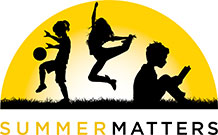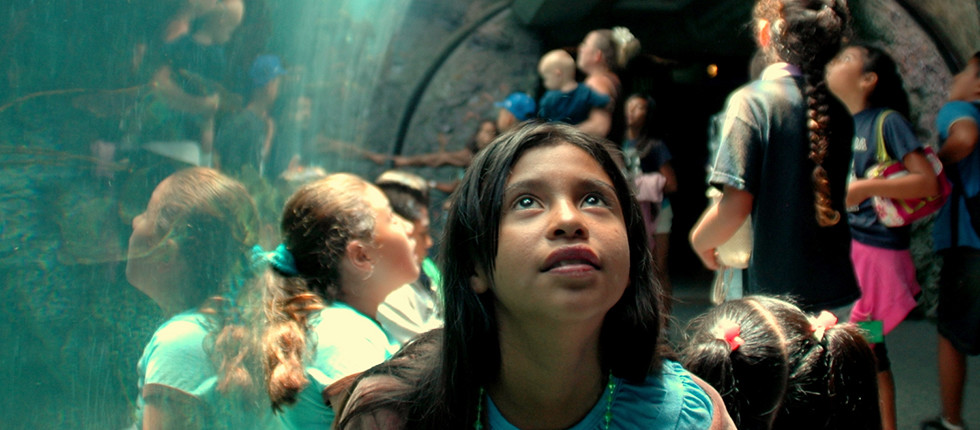by Corrie Jacobs, California Magazine
For the past six years, students and parents in the Folsom Cordova Unified School District have spent their summers doing something most families don’t do — they go to school, together. Unlike most summer camps and summer schools, the Family Engagement Summer Academy at Williamson Elementary School in Rancho Cordova, just outside of Sacramento, involves participants of almost any age.
Primarily a STEM camp for students in grades one through six, the summer learning program strives to do more than keep students physically active, fed and academically engaged during a season when support dwindles. From family members to elementary school student participants, from toddlers in on-site childcare to middle- and high-school counselors-in-training, the Folsom program is all inclusive for the community.
“In a sense, it’s a missed opportunity if we don’t figure out a way to invite our adults in to learn alongside the kids,” said Linda Burkholder, director of family engagement and support services at Folsom Cordova USD.
In order for a student to participate in the free program, a parent or another “caring adult,” such as a close relative or babysitter, must join their child for two days of the camp’s four-day week. Before joining the students for STEM (science, technology, engineering and math) learning activities, parents spend the initial part of their day in a parent group, interacting with district staff to discuss topics ranging from understanding the new California School Dashboard to effective parenting strategies.
“The Family Engagement Program Academy was an eye-opening experience because I had no idea the power that I had as a parent — that I was able to talk to people in the district office and ask questions and get answers,” said Lia Freeman, a parent of two children who participated in the program. “It really encouraged me to become more active in my children’s education.”
By making parent participation mandatory, the academy has created an adult learning community and strengthened the bond between the school district and the community it serves, according to Burkholder. Folsom Cordova USD’s summer learning program is just one example of the many ways that school districts across the state are reclaiming summer as a fruitful time for learning and community engagement.
The Ins and Outs of Summer Learning
During a long stretch of months when many students across the nation are at risk of food insecurity and summer learning loss, summer learning programs are becoming increasingly important and prevalent. According to the latest data available from the California Department of Education, approximately
117,000 students participated in summer learning programs at 1,024 school sites during the 2015–16 fiscal year. Michael Funk, executive director of the expanded learning division at the CDE, reports that those numbers are on the rise for 2017–18. A Summer Matters campaign surveyed 60 California school districts in 2014 and found that 73 percent invested money into summer programs in 2014; that statistic jumped to 95 percent in 2016.
Summer learning programs are distinctively different from traditional summer school programs. For Nazaneen Khalilnaji-Otto, the Summer Matters campaign director at the Partnership for Children and Youth, one word sums up the difference between the summer learning model and summer school:
“fun.” Summer learning takes on a “camp-like culture,” and these programs are generally open to all students, rather than only students seeking remedial or advanced coursework.
“The constraints that are present during the school year — expectations around pacing, curriculum, the pressures of testing — the summer is largely free of those constraints,” explained Matthew Boulay, founder and CEO of the National Summer Learning Association. “In a sense, it’s a blank canvas for educators.”
School districts have been using this “blank canvas” to allow students to explore their interests and engage with new ideas. In addition to Folsom Cordova USD, programs include partnerships with the Massachusetts Institute of Technology and NASA, performing arts camps, computer science and other subjects. Collectively, they deliver academic enrichment, spark creativity, encourage physical activity and provide summer nutrition.
A Wide Sea of Benefits
“Summer learning programs are one of the most effective tools for closing equity and achievement gaps,” said CSBA CEO & Executive Director Vernon M. Billy.
From academic enrichment to strengthening social skills, these programs offer a variety of benefits. Program providers all share one common goal: combating summer learning loss, which is commonly referred to as “summer slide” or “summer brain drain.” According to the National Summer Learning Association, low-income youth lose two to three months inbreading skills over the summer, while higher-income students make gains. Most students also lose about two months of math skills. These seasonal setbacks add up — low-income students may be up to three years behind their more affluent peers by fifth grade.
Student achievement gaps only continue to grow without summer intervention. “A lot of middle-income and higher-income parents are sending their kids off to summer camps, they’re doing other academic enrichment activities, and they also might live in neighborhoods where they have many more opportunities to be outside in parks, doing engaging and enriching activities,” explained Jeff Davis, executive director of the California Afterschool Network, “whereas children in low-income communities may have less of those opportunities in their own communitiesand also do not have access to things like summer camps because of the income gap.”
Summer Matters’ Khalilnaji-Otto noted that in California, especially in more affluent areas such as the Bay Area, summer camps may cost up to $500 per week. A $5,000 price tag for a 10-week program is out of reach even for middle-income families.
Many summer learning programs also provide an essential benefit for low-income students: nutrition. The likelihood of students going hungry greatly increases during the summer months when students no longer have access to the National School Lunch Program and the School Breakfast Program. More than half of all California students qualify for free or reduced-price school meals, and according to California Food Policy Advocates, nearly 1.7 million children — 85 percent — of low-income students in California who received free or reduced-price school meals during the school year miss out on those same meals during the summer. Research has also found that hunger contributes to lower academic performance.
“For many low-income children, the meals they receive at school during the regular school year are a substantial source of the food they eat every day,” said Julie Maxwell-Jolly, CSBA senior director of policy and programs.
“All children, regardless of their circumstances, deserve to thrive in body and mind all year long, but this cannot happen without good nutrition. Summer meals ensure that these children get the food they need to be healthy, strong and ready to learn.”
In addition to providing healthy nutrition, summer learning programs keep students physically active during the summer, a time when many children stay inside and inactive at home. “Kids who are prone to obesity can actually gain weight at an unhealthy rate over the summer,” said Boulay. Experts recommend that summer learning curriculum include at least 30–60 minutes of physical activity per day. In addition to physical health benefits, students enrolled in summer learning programs strengthen their mental health and social-emotional skills. When children are left alone during the summer, they can become depressed, discouraged or bored and experience feelings of abandonment. Summer learning program evaluations conducted by the Summer Matters campaign found that students in these programs experience the opposite — nine out of 10 parents indicated that summer programs helped their children make new friends and get along better with their peers. These programs boost self-confidence, encourage self-reflection and bolster a child’s sense that they belong at school.
Summer learning programs also have some surprising and unexpected benefits for educators and district staff. “Certificated teachers participating in summer learning programs find them to be an amazing way for them to develop their own skills as teachers because there is a lot more room for creativity,”
explained Khalilnaji-Otto. “They can be places to experiment.”
Summer programs can also become professional development opportunities for after-school staff, and they have aided districts with after-school staff retention. For districts that use after-school program providers from outside of the district, creating summer learning programs is a chance for outside providers to build stronger connections with district staff, leading to higher effectiveness and longevity for both after-school and summer programs.
What School Board Members Can Do
For board members looking to start a summer learning program, experts have a few words of advice: “Summer learning starts in September.” It is recommended that school districts begin planning summer programming well in advance of the intended start date, and evaluate past programs to
improve future runs. CSBA has published a detailed timeline to help school boards with program implementation (available at www.csba.org/summerlearning).
Khalilnaji-Otto also suggests having at least one dedicated district staff member to act as a coordinator and involving as many stakeholders — from the superintendent to community-based organizations — as possible in the planning process.
Determining the sources of funding for a summer learning program is a key challenge for board members to consider within the timeline. There are a variety of opportunities for funding and community partnerships to create summer learning programs or improve programs already in place. “Funding is usually a quilt — a patchwork of little pieces here and there,” said Boulay. “With the intentionality of a plan, a community can come together and really prioritize certain kids.”
Folsom Cordova USD’s Family Engagement Summer Academy is the definition of such community effort. The program was initially funded through a grant from Kaiser Permanente and today receives additional funding from a local family foundation. Guest speakers from nearby universities and businesses are included in the academy’s curriculum, and the local Kiwanis Club organized a book drive this year to collect materials for students to build their home libraries. “It’s given the community a chance to support children in different ways,” said Folsom Cordova USD’s Burkholder.
California school districts also support summer learning programs using Local Control Funding Formula funds and grants from the CDE. California has the largest expanded learning infrastructure in the nation — including before-school, after-school and summer programs — serving just under 860,000 children last year.
While other states rely heavily on federal 21st Century Community Learning Centers funding, California has an additional state funding stream for expanded learning — the After School Education and Safety Program. For 2017–18, the CDE will be awarding almost $32 million in grant money to 1,113 unique school sites for expanded learning programs that operate in excess of 180 regular schooldays or during any combination of summer, weekends, intersession or vacation periods.
With these summer learning programs in high demand in California, there are many resources available to aid school boards in their summer learning planning. CSBA has recently published new summer learning materials — including a highly detailed planning guide — with generous support from the
David and Lucile Packard Foundation.
This article orignially appeared in California Schools Magazine.



